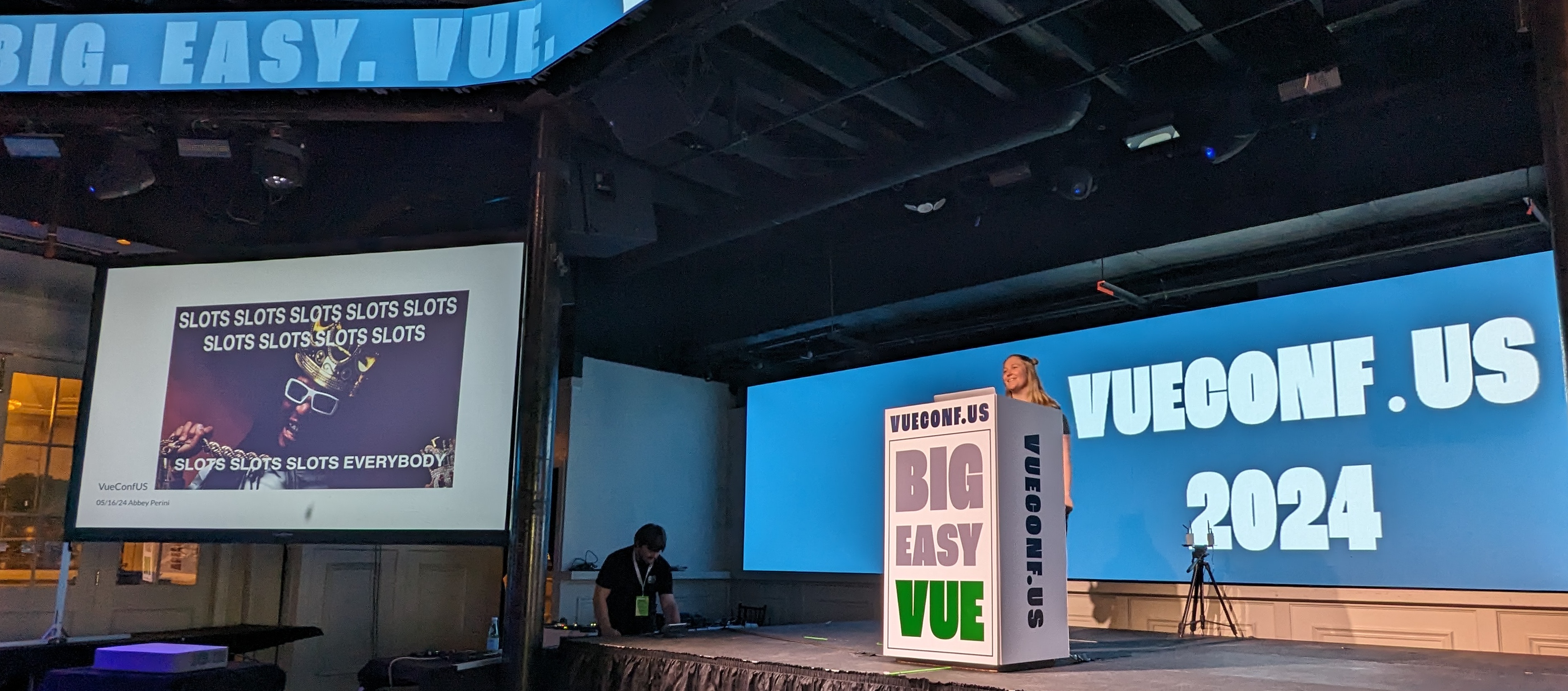So You Need to Give a Talk...
 Abbey Perini
Abbey Perini
Take it from someone who barely passed their college public speaking course - you can definitely give a tech talk.
Pick an Idea
Everyone has a unique perspective or experience that is worth sharing. Every time you explain something to a coworker, solve a unique problem at work, dive down a research rabbit hole, or solve a hard problem, that's an opportunity to write a talk.
Marketing
Whether it's a meetup or conference call for proposals (CFP), you'll need a title and an abstract. If you can come up with a witty title, great. Otherwise, a short, descriptive title is perfectly fine.
Think about the abstracts you've read that made you want to attend a talk. Don't list out every point you're going to make. Do convey what attendees should expect to learn during your talk.
Many CFPs ask for supporting materials or more explanation. This is the place to list out all of the points you want to cover and show you understand the topic. All of my talks start as blogs, so I usually use a link to the blog.
Save all of this information after you've typed it out. You can and should submit the same talk to multiple events. If the talk never gets picked up, it can always be turned into written or video content. If it gets picked up multiple times, you'll be able to improve upon it iteratively.
If you're mainly motivated by deadlines, you can wait for your talk proposal to get accepted before working on it more. If you're excited about the idea, you can go ahead and start your outline.

Outline
Just like in the more explanation part of the CFP, write down the main points you want to convey during your talk. Once you're done, read back through your points from the prospective of an attendee. Do any of the points require prerequisite knowledge or more explanation?
The best talks have a flow that is similar to a story - a beginning, middle, and end. If your beginning involves introducing yourself, make it relevant. For example, why you're an expert on this subject or how you got the idea for the talk. If you're talking about a problem and a solution, the beginning is the time to outline the problem you're going to solve. The middle sets up all the necessary context for the end. The end is your conclusion, recommendation, or solution.
Slides
Find a slides program you are comfortable using. These days, your slides double as notes for attendees to use after your talk, so don't forget to include ways to connect with you and a QR code with a link to your slides. If you don't want to use slides, structure what you will be showing on the screen so that you can still give a copy to the audience. For example, a code repository with comments in the code. I've even heard of making a copy of your terminal history and publishing a link to it if your talk is entirely in the command line.
Put your outline in your slides (or code repository or terminal history). Include links to relevant codepens, code repositories, documentation and resources. Include helpful visual aids with captions and/or memes with alt text.
An outline should be just enough words to get your point across. Don't write down the entire script of your talk. You don't need a slide for every sentence you're going to say. Use link formatting to turn text into links rather than bare URLs. Whatever you are showing on the screen should support what you are saying, not distract from it.

Practice
Practice includes rehearsing a specific talk you need to give and giving talks in front of audiences. You'll see that the people with lots of public speaking experience don't have to rehearse specific talks as much. Until you have made a mistake and recovered in front of an audience, it's a good idea to know your talk really well before you get on stage. If you rehearse, when something goes wrong or throws you off, it's much easier to remember what you were going to say and get back on track.
Experienced speakers will tell you speaking in front of an audience is the only way to get comfortable speaking in front of an audience. So utilize opportunities to give demos and presentations at work and in school. Ask your friends and family to listen to your talk even if they don't understand the topic.
If there is dedicated time for questions or you'll allow attendees to ask you questions after your talk, you need to be familiar with the topic beyond what's on your slides. If you want to use a clicker, play a video, use a prop, or live code, rehearse with these things.
Unless you have confirmed beforehand with the event that you will have reliable internet and multiple screens, practice your presentation without internet on a single screen.
You can always use paper notes, but I prefer to make my slides my notes. If you read your notes like a script, it will sound like you're reading a script. As I rehearse, I'll add slides with points I keep forgetting to say and remove slides I find I don't need.
If you're live coding, set up examples that require the least amount of typing. This usually means commenting and uncommenting chunks of code or only running simple commands.
If you're planning on doing a demo (especially if it's your company's product), record yourself demoing before the talk. Something always goes wrong with a demo, so you may need to play the recording instead.
The Big Day

As a speaker, you'll find every other speaker understands that your goal is to minimize your anticipatory anxiety until you've given your talk. Prepare for this. In the weeks leading up to the talk, find a few anxiety reduction techniques that work for you and use them on the big day. I find it extremely helpful to ask a friend to set aside 30 minutes before my talk just to hang out and talk with me. Don't pick the day of your talk to do things that spike your anxiety. Do remember to eat regular meals and drink plenty of water. Charge your devices and bring adaptors for display cords. This puck has saved many butts, including mine.
Attend other talks and hang out in the speaker room. This way, you'll find out if other speakers are running into problems with the setup and have already found solutions. Get to your speaking location early so you have time to do a tech check.
If you don't have friends attending the event, befriend other speakers and attendees. If all else fails and you start panicking, a friendly face makes a big difference.
Most importantly, remember the audience wants to be interested in your talk and thus wants you to succeed.
Subscribe to my newsletter
Read articles from Abbey Perini directly inside your inbox. Subscribe to the newsletter, and don't miss out.
Written by

Abbey Perini
Abbey Perini
💻 Full-Stack Developer 🧶 Fiber artist 🧘🏼 Yoga Teacher 🤓 Full-time nerd ...did someone say animated CSS button?